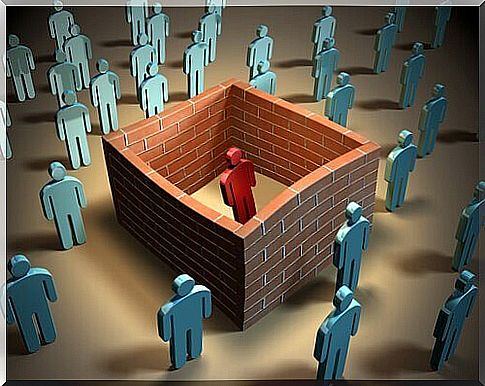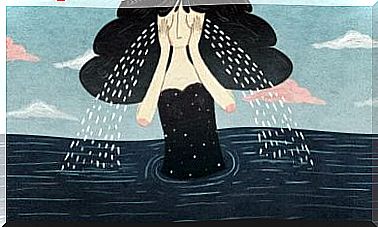Social Withdrawal Syndrome: Hikikomori

In recent years there has been a strong growth in the number of cases of hikikomori, or social withdrawal syndrome. The hallmarks of this syndrome are voluntary isolation and loneliness. People who suffer from this find the world unfriendly, dangerous and aggressive. And that is why these people seek solitary seclusion.
The syndrome was originally known as hikikomori. This means “to be locked up” in Japanese. The Japanese psychiatrist Tamaki Saito first coined this term in the year 2000. This expert described it as a new social disorder. It is based on deliberate withdrawal for a period of at least 6 months.
Most often, social withdrawal syndrome affects young adults. They have no form of social interaction, education or work.
Social Withdrawal
People who suffer from social withdrawal syndrome tend to avoid contact with the outside world. The fear of leaving their familiar place is also very great. Therefore, they isolate themselves completely. They lock themselves in their room for a long time. The main reason for staying inside is that they want to be alone.
Slowly but surely they get rid of all communication. In the end, they can safely lock themselves in their small space. At first, they lock themselves in their room for days on end. Days turn into weeks and then sometimes even years.
They sleep through the day, watch television, or immerse themselves in the world of virtual video games.
In most cases, they have a small, if not none, circle of friends. Young people with this syndrome only have contact with the outside world through gadgets. And people who are very affected don’t even interact with others online.
Hikikomori affects the sleeping pattern
The social withdrawal syndrome causes temporary changes in the biological characteristics of the affected individuals. These young people sleep during the day and play games at night.
They eat their meals at the strangest times. Also, they eat without any restrictions and do not pay attention to the nutritional value. Often they will have a meal delivered or they live on ready meals.
At the same time, they also do not pay attention to hygiene. They are invariably surrounded by garbage. This is because they refuse to go outside or even leave their room. Not even to take away the remnants of their meals.
The role of the parents
Shinguru is a Japanese term that roughly translates as “parasitic bachelor.” It refers to adults who continue to live under the wing of their parents. They are after a comfortable life that they could not afford themselves.
Adolescents with this syndrome do not really have a relationship with other family members. Sometimes they frighten their parents by their aggressive behavior. They may also suffer from dejection that gradually turns into anxiety and depression. In some cases, this withdrawn lifestyle leads to deep disappointment. And then some commit suicide.
Subtypes of Social Withdrawal Syndrome
All subtypes of the social withdrawal syndrome are characterized by voluntary withdrawal. But not all people with this condition shut down in the same way or to the same degree. Experts have identified four types of hikikomori:
- Pre- hikikomori : These people still go to school or university. But they try to avoid any form of social interaction as much as possible.
- Social hikikomori: Those who suffer from this refuse to work or study. But they still have certain social relationships. These are usually online.
- Tachisukimi-gata : Social phobias characterize this type. When confronted with the outside world, they are paralyzed by fear.
- Negogehaijin : Literally, this means “computer zombie .” These young people are completely isolated. They spend all their time behind the computer or in other virtual situations.

Hypotheses explaining the social withdrawal syndrome
We don’t know how to explain this psychological change. Some scientists believe it is the technology itself. This causes people to lose touch with reality.
Others believe it is a result of too much family pressure. This pressure then provides insulation. In this case, the parents’ expectations for the future are broken. Some scientists also mention socio-economic or simply economic factors.
The syndrome was first mentioned in Japan. Therefore, it was initially believed to be solely related to the individualistic and competitive Japanese society. Millions of people are affected by it. Also, the syndrome is now more common in countries such as Spain, Italy, the United States, Oman, and India.









